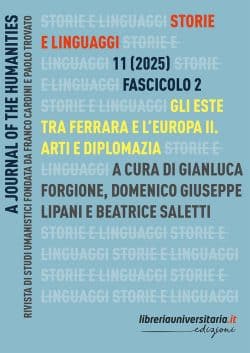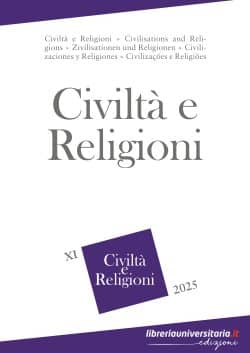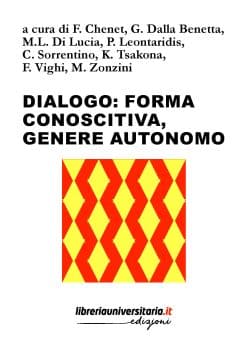Indice
a cura della Redazione di Civiltà e Religioni
Daniel Fabre
Tomasino Pinna
The “sacred” is a word that, not until the end of the nineteenth century, has been subject to redenomination. From a term meant to indicate the result of ritual activity following the speculations of protestant theologians like Rudolf Otto and Lars Olof Jonathan Söderblom, it came to mean the essence itself of religion. In its present form, the “sacred” came up to be uncritically assumed and denied its historical dimension within phenomenological circles and from there to the morphological-cultural school, the conclusions appeared in the Nostra Aetate Declaration of the Second Vatican Council, essentialism, cognitivism and socio-biological schools. A rigorous and critical historical perspective is the only mean to shed light over confusing approaches to the study of religions.
Unpublished correspondence reveals a unique relationship between art historian and German writer Rolf Schott and well-known philologist and historian of religions Karoly Kerényi.
Having fled their country of origin to avoid the Nazi ideology, they both lived the rest of their existence in a substantial condition of exile. In spite of this, it is not uncommon to glimpse into Kerényi’s regards to Schott a due tribute to the fate that moved them away from their homeland, but allowed them to meet.
Surprisingly, we learn that the well-known Kerényi turns to the unknown Schott as a student to a teacher, a guide granting comments and opinions. But, reversing the usual mentor-disciple relationship, where the first co-opts the second, here is Kerényi who picks Schott as a guide, thus reiterating its proud autonomy of Hungarian intellectual who chooses but is not chosen.
By means of an overview of Greek Sicily, it is possible to acknowledge how several myths are featured by aquatic landscapes. Seas, lakes, springs, caves, swamps, hot waters or special waters are the ideal element for the birth of a myth, a cult or a holy place. From a structural point of view, the link between the “sacred” and waters presents itself in various ways: small sanctuaries close to water streams, monumental springs, subterranean rivers and great buildings. When water is naturally lacking, then holy places feature aqueducts, cisterns, tanks, wells, etc. that is tools to control and conserve water. The paper aims investigate and define the idea of “water sanctuary” by focusing on its specific features and the deities therein worshipped.
The bronze table from Tiriolo (CIL 10, 104) attests, in ll. 1-2, the voting of a senatus consultum de Bacchanalibus (186 BC) in Bellona’s temple, located outside pomerium. It is however possible that the first senatus consulta de Bacchanalibus, attested in Livy 39,14,5-9, were voted in a templum inside pomerium, and in particular in the curia Hostilia, near the comitium.
Taking into consideration some Christian pilgrimages which can be defined as “minor” ones, in this work we shall be paying attention to some issues connected with the relationship between the environment, society, and sacred places, and with the functions covered by the pilgrimage itinerary in relation to the different composition of the “pilgrim communities” and the “religious” reasons which could support the continuity of attendance of places of worship and the repetition of certain ritual practices. Despite the socio-cultural transformations, the variation of life expectations of the faithful, the production systems, diets, demographic consistency, the pilgrimage is indeed a religious institution spread in large areas of Europe, and other countries, presenting a remarkable morphological and functional stability. There are no explanations which can wholly account for this phenomenon. With regard to peripheral and economically depressed areas, we can observe that to the conditions of precarious existence typical of rural communities, to physical and psychic disorders, anthropological constants connected to the genesis and the development of sacred rituals, today we should add the existential crisis and the discomfort of living generated by the disarticulation of the system of rules and values offered by traditional societies. The communities respond to such a dramatic situation, according to an ancient well-known language, looking for certainties and points of reference, an order and a sense, in “memorial” symbols. It can therefore be stated that among the reasons for the persistence of pilgrimages there is even their “power” to give satisfaction to instances of psychological and social order, proposing “according to tradition” all-round solutions to the problems, in some cases contradictory ones, experienced in practice. Besides, we should consider also the precise choice of single communities to recognize themselves and establish themselves through the repetition of collective and performative religious traditions, perceived as founding moments of their own social and cultural belonging.
The political arena of contemporary Nepal, a country still shaken by an abrupt passage from monarchy to republic, is witnessing a proliferation of movements led by the country’s several ethnic and cultural minorities. The paper intends to examine identity dynamics long repressed by the central government by means of the study of the Hyolmos of the Helambu Valley. Their privileged relationship with a landscape heavy with cultural and religious signs is being used as a way to affirm Hyolmo identity in the complex Nepalese society and its current political scene.
This article aims at exploring some aspects of religious
ritual of Navakalevara, the 12-monthly cyclical renewal of the sacred image
(murti) of the Lord in the Jagannatha temple in Puri (Odisha, India). The
ritual unfolds the holy space of the city to the procession proceeding into the
forest in search of the sacred n?m tree (Azadirachta indica A. Juss.) chosen to
become the new wooden representation of God. Two whole months are needed for
the various phases of the ritual renewal of the ksetra (field) to take place.
This is identified with the sacred space of the city of Puri included among the
so-called car dham, the four most important pilgrimage sites of India. This
space is also envisioned as inscribed in a kind of ?ankha mandala, or a shell
diagram that is clearly both one of the attributes of the god Visnu – of whom
Jagannatha is a hypostasis – and a cosmic symbol. The study is based on a cross
analysis on historical and literary sources and ethnographic data.
Il «mio libro mondo» è una rubrica fissa di questa rivista, ideata da Marcello Massenzio. L’oggetto è l’opera che ha significativamente caratterizzato l’esperienza culturale di colui che di volta in volta verrà invitato a scriverne. Un libro, ma anche un saggio breve, deve trasmettere un messaggio, altrimenti è mera catalogazione erudita. Ciascuno di noi ne ha almeno uno di cui mantiene la memoria e di cui ritiene valga la pena parlare.





